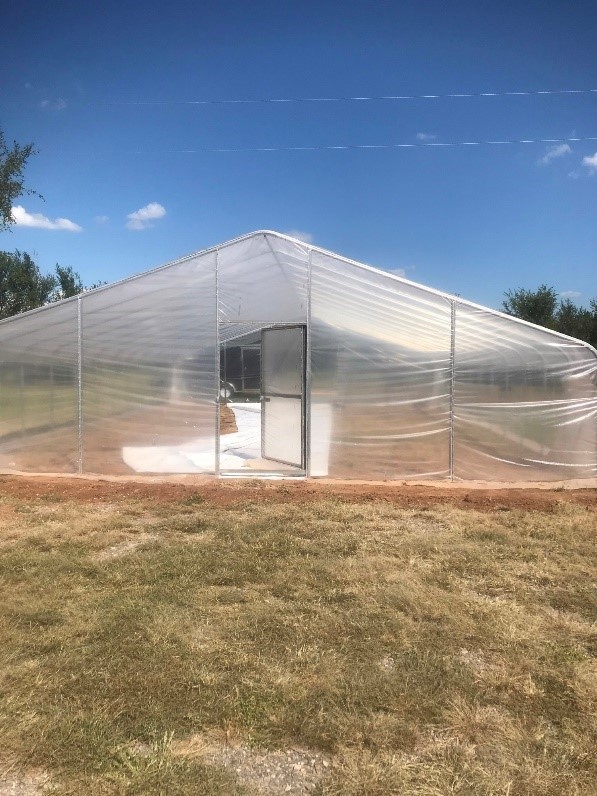|
Fort Sill Apache and USDA NRCS work together in project that uses heritage as the seed to grow a promising tomorrow
 History is very significant to each of our tomorrows. It can be shared in photos and in books, but there are projects that can also bring it to life.
The Fort Sill Apache Environmental Programs applied for and received the generous USDA Natural Resources Conservation Service (NRCS) grant to purchase and construct a seasonal high tunnel for the Tribe to use for cultural outreach purposes. This project became necessary in order to expose local visitors to plants used by the Chiricahua and Warm Springs Apaches in their homeland, as they do not grow naturally in the Oklahoma climate. This simulated climate can also be used to grow desert-friendly fruits and vegetables that will be made available to elders.
Phocas Farms of Edmond, Okla., was the supplier of the high tunnel.
Monte Scammahorn, Environmental Specialist, for the Fort Sill Apache Tribe, said, “They were very helpful in getting us the right materials and instructions. Our maintenance department donated a great deal of time and effort to help erect the structure. Our Historian, also a botanist, and our Cultural Director, are guiding FSAEP in selecting plants to display in open raised beds. These plants include cacti, yuccas, agaves, sages, wildflowers, and other desert flora. Fruits and vegetables will grow from the ground in native soil.”
Until now, slide shows, publications and a select few species grown here were the only way to show locals what plants were used and how they helped these Apaches survive, make goods, foods, treats, medicine, and weapons. A people separated from their environment need this knowledge in order to maintain their culture, as plants played such a vital role in it.
“We are thankful to be able to open the Fort Sill Apache Ethnobotanic Garden,” Scammahorn said. “Connecting local youth and other members to their heritage through ethnobotany is a powerful way to maintain cultural literacy for the Tribe. It is continuing the tradition of this people adapting to overcome obstacles to their survival and enrichment. Geographical barriers no longer have to keep them in the dark. As prisoners, they had to find plants that were suitable substitutes for those that only grew in the desert. Now, the Tribe can teach the many ways its ancestors adapted to live vibrant, healthy lives with limited resources. Hopefully, this inspires future generations to take on the same traits and recognize the value in their surroundings.”
Also, the Tribe recently held a youth conservation Outdoor Classroom event for local third through fifth grade students.
“The kids watched demonstrations on soil conservation, wetlands, drones, wildlife, and outdoor activity health,” Scammahorn said. “The Tribe continues to remain involved in youth outreach and plans to include the ethnobotanic garden in future events.”
|